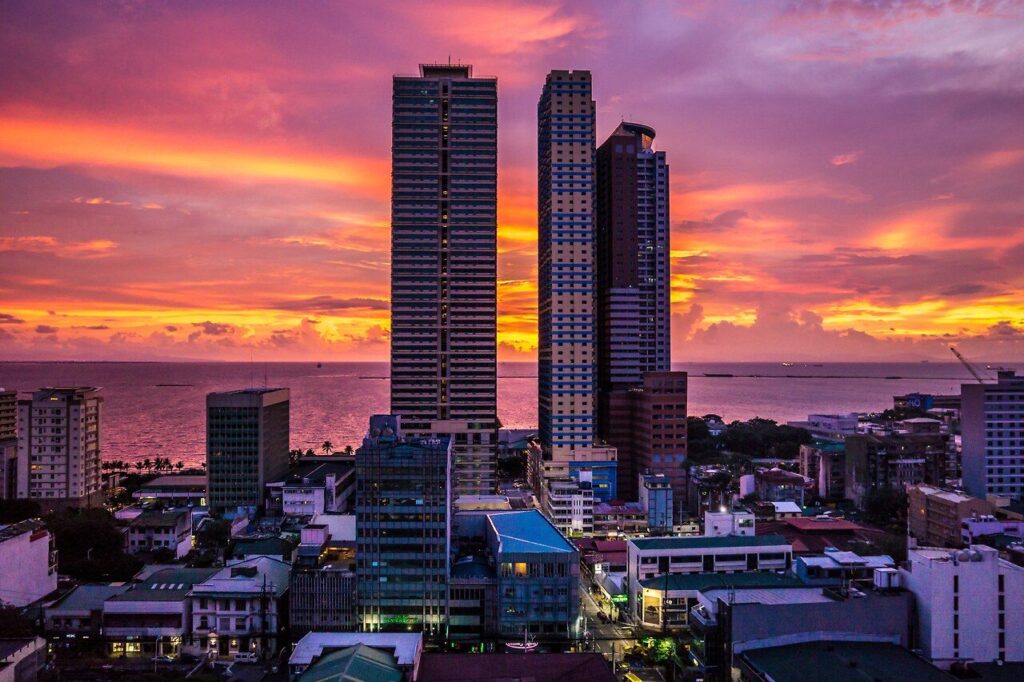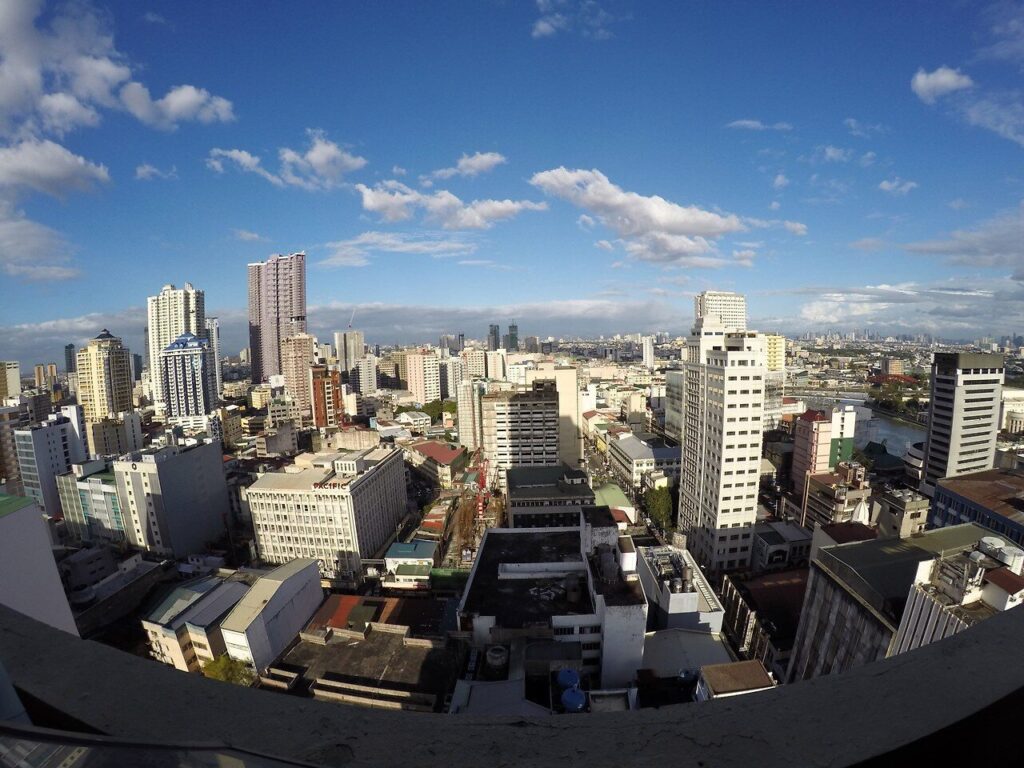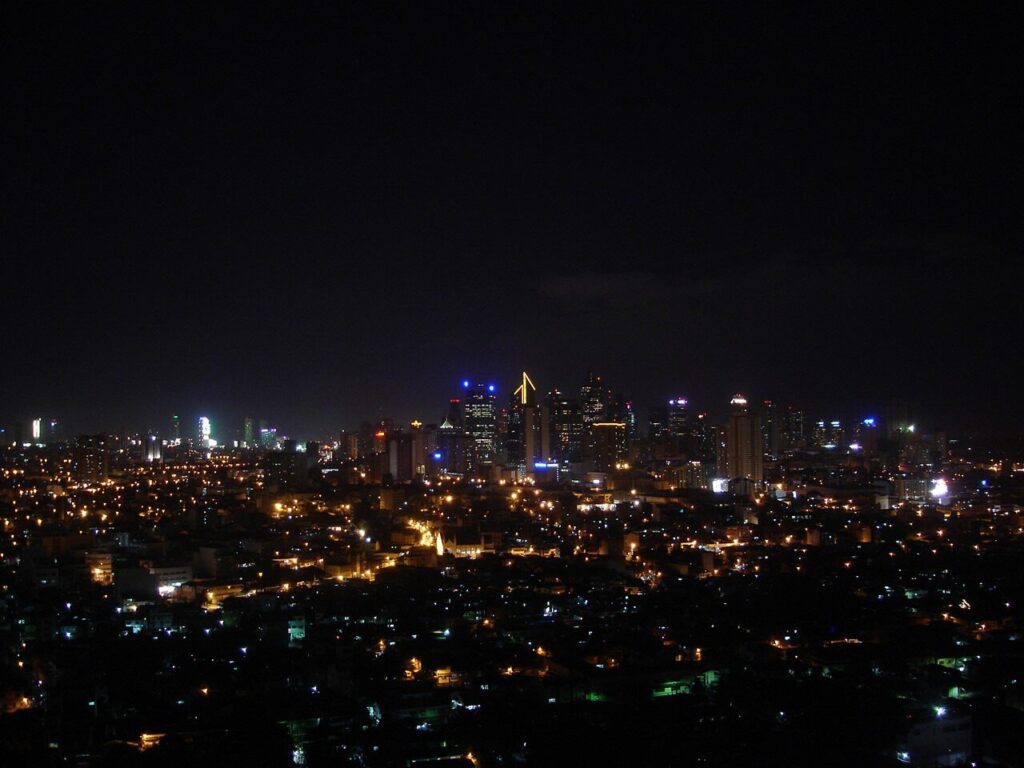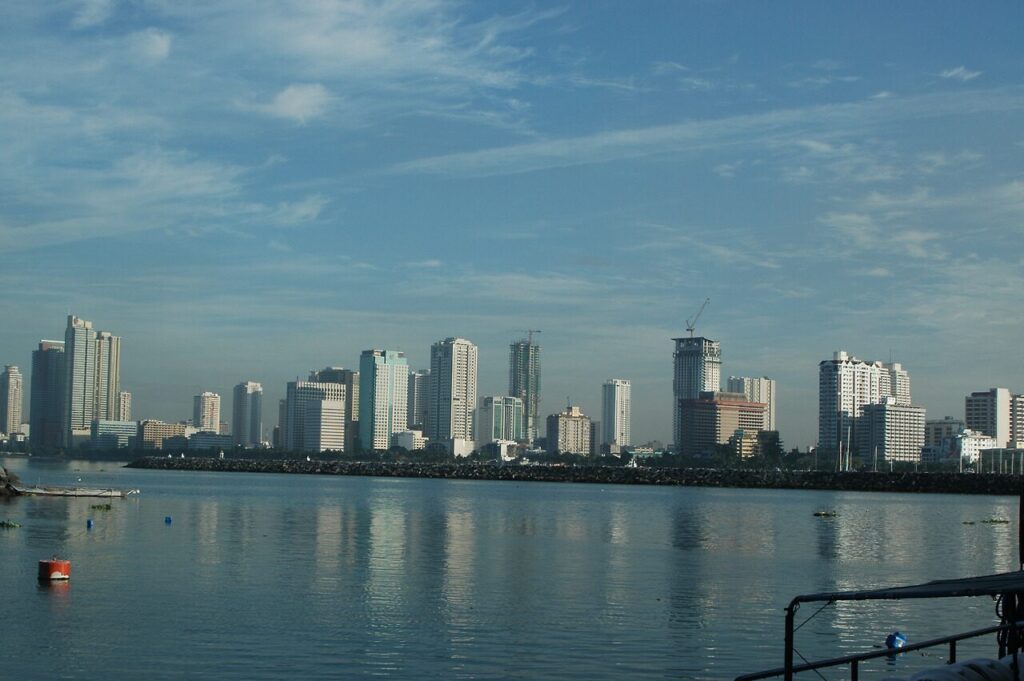
Manila is presented as the political, economic, and cultural center of the Philippines.
1. City Overview
- Population: The city proper has a population of approximately 1.78 million. Metro Manila (the greater metropolitan area) is estimated to have 15.23 million people as of 2025.
- Area: The city’s administrative area covers approximately 38 km², while the Metro Manila area spans 636 km². The urban population density is around 43,600 people/km², making it one of the highest in the world.
- Languages: The official languages are Filipino and English. Many dialects are also used, and multilingualism is common as a medium for street language and culture.
- Religion: The majority religion is Roman Catholicism, with smaller communities of Protestants, Muslims, and Buddhists.
- Climate: Manila has a tropical monsoon/humid climate, with an annual average temperature of 28°C. There is a dry season (December–May) and a wet season (June–November), with an average annual rainfall of about 2,000 mm.
2. History
- Spanish Colonial Period (1571–1898): In 1571, Governor Miguel López de Legazpi established Intramuros, a walled city in Manila.
- American and Japanese Occupation (1898–1945): The United States introduced modern infrastructure, education, and road facilities. During World War II, the city suffered extensive destruction by Japan.
- Post-War Reconstruction and Modernization (1946–Present): After the war, Intramuros was rebuilt, and Metro Manila developed into a political and economic center.

3. Geography
- Location: Manila is situated on the eastern part of Luzon Island, bordering Manila Bay and located at the mouth of the Pasig River.
- Structure: The city consists of Intramuros (the old city center) and six other districts connected by the northern and southern flows of the Pasig River.
4. Culture
- Heritage and Art: Manila showcases a blend of Spanish and American cultural heritage with modern Filipino culture. Notable multi-historical sites include Rizal Park, San Agustin Church, and Intramuros.
- Educational and Literary Hub: It is home to the University of Santo Tomas, Asia’s oldest university, and various cultural institutions, including the National Museum.
- Lifestyle and Festivals: City life includes strolling along the Baywalk and experiencing coastal evening culture. Pilgrimage festivals centered around Quiapo Church are also popular.

5. Environment
- Challenges: The city faces issues such as overpopulation, traffic congestion, air and water pollution, and vulnerability to floods.
- Response Strategies: Efforts are underway to improve the Pasig River, create parks like Rizal Park, expand the metro system, and promote urban redevelopment.
6. Economy
- Central City: Manila is the economic, financial, industrial, and service hub of the Philippines.
- Industrial Composition: Its industries include manufacturing (chemicals, textiles, food, publishing), and it is a major port for cargo and home to financial institutions.
- Tourism and Services: The tourism industry thrives around Intramuros, Baywalk, museums, and Ocean Park, attracting both domestic and international visitors.

7. Key Locations
- Historical and Cultural Sites:
- Intramuros: The walled historic district, which includes Fort Santiago and San Agustin Church.
- Rizal Park: A vast memorial park centered around the Rizal Monument.
- Quiapo Church: Famous for its pilgrimage statue of the Black Nazarene.
- National Museum: A cultural complex integrating archaeology, ethnology, and art museums.
- Modern Attractions:
- Manila Baywalk & Ocean Park: A central area for coastal walks and marine tourism.
8. Conclusion
Manila serves as a critical intersection of politics, culture, and economy, and is a hyper-dense megacity.
- Strengths: Its strengths include its rich historical heritage, strategic port location, and complex cultural and tourist attractions.
- Challenges: Key challenges include overpopulation, environmental burden, traffic, and flood risks.
- Future Strategies: Future plans involve:
- Improving the Pasig River and expanding public green spaces.
- Expanding the public transportation network, specifically the Rapid Transit System.
- Urban regeneration projects that upgrade old city infrastructure.
- Sustaining growth in its tourism and cultural sectors.
